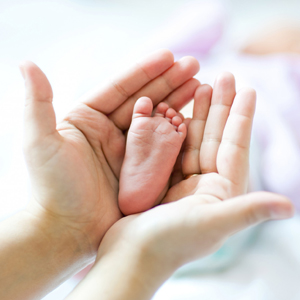Urinary Incontinence
We are here to resolve your health problems.
Urinary incontinence, a lack of bladder control, is frequently observed in elderly people, women who have just given birth, and women who are menopausal. It varies from slight leakage during coughs or sneezes to a strong urge to urinate that hinders reaching the restroom on time. Urinary incontinence is a more common occurrence as individuals age, although it is not a natural part of becoming older. Consult your doctor right away if urinary incontinence interferes with your daily activities.
What causes it?
Urinary incontinence can arise from various factors, with gender influencing the causes differently. Chronic medical conditions often play a role in this condition, requiring long-term management. If incontinence stems from a chronic ailment, it becomes an ongoing challenge that needs to be addressed over an extended period. Incontinence may have transitory or transient causes, such as:
- Urinary tract infections (UTIs)
- Pregnancy
- Side effect of some medications
- Constipation
Incontinence may have chronic or lingering causes, such as:
- Stroke
- Diabetes
- Menopause
- Prostate enlargement
- Following prostate cancer surgery
What signs or symptoms indicate urinary incontinence?
Urine leaking is incontinence’s primary symptom. This may involve regular urine leaks or sporadic incidents of leaking. You may have tiny or big volumes of pee leaking if you experience incontinence. Leakage can occur for many different causes, typically dependent on the type of incontinence you have.
Urine leakage might occur if you:
- Exercise.
- Cough
- Sneeze
- Having the need to urinate yet being unable to get to the bathroom in time.
- Need to wake up in the middle of the night to use the loo.
Diagnosis of urinary incontinence
Diagnosing urinary incontinence can be done in several ways:
- Physical exam
- Urinalysis Testing is done to look for abnormalities and infection indications.
- Blood tests to evaluate kidney health.
- Pelvic ultrasound
- Stress Test
- Cystogram
- Urodynamic testing is used to measure how much pressure the bladder and sphincter muscle can bear.
- Post Void residual (PVR) measurement
What your treatment will consist of
Treatment for urinary incontinence depends on the underlying cause and may involve medication, surgery, or other therapies. However, in certain cases, the underlying cause may not be treatable, and your doctor will provide guidance on managing the condition effectively.
There are several possible treatments for urine incontinence:
- Medication
- Weight Loss
- Exercises that improve bladder control include pelvic floor exercises and bladder training.
- Regulating your hydration intake and making dietary changes.
- Condition Management, if another condition is what’s causing your urinary incontinence.
- External or Internal Catheter placement
Complications of Urinary Incontinence
Depending on the underlying reason, problems from urine incontinence and its treatment may arise. These difficulties might consist of:
- Infections of the urinary tract
- Adverse effects of medication
- Kidney damage
- Catheter side effects
- Cellulitis
- Mental health problems such as anxiety, depression, or social isolation.
How to prevent Urinary Incontinence
There are things you can do to lower your chance of getting urine incontinence, but you can’t avoid every incidence of it.
- Maintain a healthy weight
- Workout frequently.
- Limit your intake of alcohol and caffeine.
- Consume a healthy diet
- If you smoke, don’t do it.
- For bladder or urinary tract infections, get treatment right away.
Why choose Giggles?
One of the top hospitals for Women And Children Hospital in Kukatpally in India for treating urine incontinence is Giggles Hospital. For the treatment of urinary incontinence, we offer unmatched patient care and hospital experiences. We have top-tier Best Gynecologists near me and cutting-edge technologies under one roof, guaranteeing that patients get high-quality care. To avoid difficulties, we strictly adhere to infection control methods.




